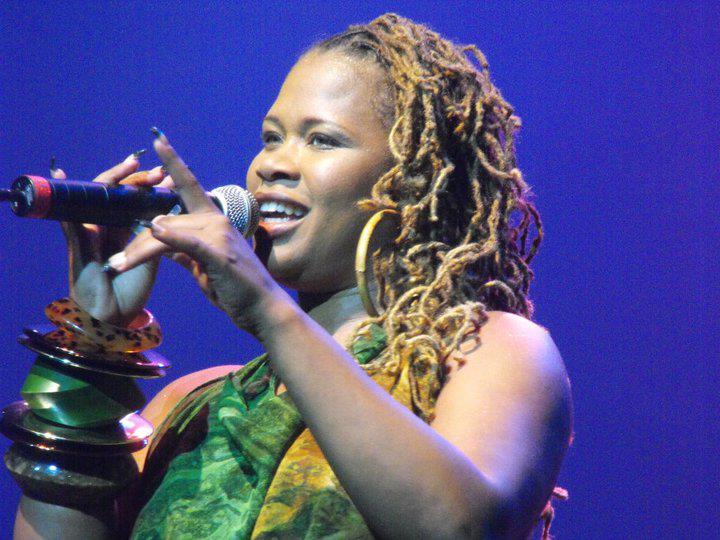|
Soca Music
Soca music, or the "soul of calypso", is a genre of music that originated in Trinidad and Tobago in the 1970s. It is considered an offshoot of Calypso music, calypso, with influences from Afro–Trinidadians and Tobagonians, Afro-Trinidadian and Indo–Trinidadians and Tobagonians, Indo-Trinidadian rhythms. It was created by Ras Shorty I (or Lord Shorty) in an effort to revive traditional calypso, the popularity of which had been declining amongst younger generations in Trinidad due to the rise in popularity of reggae from Jamaica and Soul music, soul and funk from the United States. From the 1980s onward, soca has developed into a range of new styles. Etymology "Soca" is a Blend word, portmanteau of the words "soul" and "calypso". The genre was defined by Lord Shorty as the "Soul of Calypso." The word was originally spelled s-o-k-a-h by Lord Shorty. In a 1979 interview with ''Carnival Magazine,'' Lord Shorty stated that he "came up with the name soca. I invented soca. And I ... [...More Info...] [...Related Items...] OR: [Wikipedia] [Google] [Baidu] |
Cadence-lypso
Cadence-lypso is a fusion of cadence rampa from Haiti, Jazz, Blues and calypso music, calypso from Trinidad and Tobago that has also spread to other English speaking countries of the Caribbean. Originated in the 1970s by the Dominican band Exile One, it spread and became popular in the dance clubs around the Creole world and Africa as well as the French Antilles. Genres: Caribbean and Latin America. Gordon Henderson (musician), Gordon Henderson is the leader and founder of Exile One, and the one who coined the term ''cadence-lypso''. Performing the Caribbean Experience. History Dominican contemporary music, that is the music played by the dance bands from the 1950s, has played a very important role in Dominica national life. Dominica musical landscape has seen many changes in the intervening period from 1950. In the forties and fifties, there were bands such as the Casimir Brothers of Roseau. The Swinging Stars emerged at the end of the fifties. Their music was a dance-oriente ... [...More Info...] [...Related Items...] OR: [Wikipedia] [Google] [Baidu] |
Zouglou
Zouglou ( , ) is a dance oriented style of music originated from Ivory Coast during the mid-1990s. It started with students from a college of Gagnoa drawing on elements of other styles of music. Zouglou recounts the various social realities experienced by the Ivorian youth and carries messages, sometimes humorous, sometimes political, or, more often, delivers advice on life. It has since spread elsewhere, including to Burkina Faso, Cameroon and Gabon. The export of the phenomenon It was in 1989 that the zouglou as dance, language and philosophy, exports of the city of Yop to that of Abobo. Opokou N'ti, with real skills choreographic was blessed by Joe Christy to "liberate" (dance) to the city of Abobo to demand "teachers" who had invited them to fraternize. A few weeks later comes the demonstration zouglou in non-student in the hall of Kumasi, when the Ziguehi was a reality in Côte d'Ivoire, facilitated by Alain Gaston Lago and Tahi (Commissioner Tricot). The man of letters ... [...More Info...] [...Related Items...] OR: [Wikipedia] [Google] [Baidu] |
Latin Music
Latin music (Portuguese language, Portuguese and ) is a term used by the music industry as a catch-all category for various styles of music from Ibero-America, which encompasses Music of Latin America, Latin America, Music of Spain, Spain, Music of Portugal, Portugal, and the Latino (demonym), Latino population in Latin music in Canada, Canada and the Latin American music in the United States, United States, as well as music that is sung in either Spanish language, Spanish and/or Portuguese language, Portuguese. It may also include music from other territories where Spanish- and Portuguese-language music is made. Terminology and categorization Because the majority of Latino immigrants living in New York City in the 1950s were of Puerto Rican or Cuban descent, "Latin music" had been stereotyped as music simply originating from the Spanish Caribbean. The popularization of bossa nova and Herb Alpert's Mexican-influenced sounds in the 1960s did little to change the perceived im ... [...More Info...] [...Related Items...] OR: [Wikipedia] [Google] [Baidu] |
Zouk
Zouk is a musical movement and dance pioneered by the French Antillean band Kassav' in the early 1980s. It was originally characterized by a fast tempo (120–145 bpm), a percussion-driven rhythm, and a loud horn section. Musicians from Martinique and Guadeloupe eventually added MIDI instrumentation to their compas style, which developed into a genre called zouk-love. Zouk-love is effectively the French Lesser Antilles' compas,Popular Musics of the Non Western World. Peter Manuel, New York Oxford University Press, 1988, p74 and it gradually became indistinguishable from compas. Zouk béton The original fast carnival style of zouk, best represented by the band Kassav', became known as "zouk béton", "zouk chiré", or "zouk hard". Zouk béton is considered a synthesis of various French Antillean dance music styles of the 20th century, including kadans, konpa, and biguine. See also * Brazilian Zouk * Music of Latin America * Music of Martinique * Music of Guadeloupe ... [...More Info...] [...Related Items...] OR: [Wikipedia] [Google] [Baidu] |
Trinidad And Tobago Carnival
The Trinidad and Tobago Carnival is an annual event held on the Monday and Tuesday before Ash Wednesday in Trinidad and Tobago. This event is well known for participants' colorful costumes and exuberant celebrations. There are numerous cultural events such as "band launch" fetes running in the lead up to the street parade on Carnival Monday and Tuesday. Traditionally, the festival is associated with calypso music, developed by Afro-Trinidadians in 17th century Trinidad; however, Soca music has begun to replace calypso as the more popular musical genre for Carnival. Costume (sometimes called " mas"), stick-fighting, limbo, and steelpan competitions are important components of the festival. Carnival, as it is celebrated in Trinidad and Tobago, has spread to many other Caribbean islands as well as several cities worldwide. These celebrations include Toronto's Caribana, Miami's Miami Carnival, Houston Carifest, London's Notting Hill Carnival, as well as New York City's Labor Da ... [...More Info...] [...Related Items...] OR: [Wikipedia] [Google] [Baidu] |
Indo-Caribbean People
Indo-Caribbean or Indian-Caribbean people are people from the Caribbean who trace their ancestry to the Indian subcontinent. They are descendants of the Jahaji indentured laborers from British India, who were brought by the British, Dutch, and French during the colonial era from the mid-19th century to the early 20th century. Indo-Caribbean people largely trace their ancestry back to the Bhojpur and Awadh regions of the Hindi Belt and the Bengal region in North India, in the present-day states of Uttar Pradesh, Bihar, Bengal and Jharkhand, with a significant minority coming from the Madras Presidency in South India, especially present-day Tamil Nadu and Andhra Pradesh. Other notable regions of origin include Western Uttar Pradesh, Mithila, Magadh, Chota Nagpur, Madhya Pradesh, Haryana, Rajasthan, Pashtunistan, Punjab, Sindh, Kutch, Gujarat, Maharashtra, and Kashmir. Most Indians in the French West Indies are of South Indian origin and Indians in Barbados are mostly of ... [...More Info...] [...Related Items...] OR: [Wikipedia] [Google] [Baidu] |
Hindi
Modern Standard Hindi (, ), commonly referred to as Hindi, is the Standard language, standardised variety of the Hindustani language written in the Devanagari script. It is an official language of India, official language of the Government of India, alongside English language, English, and is the ''lingua franca'' of North India. Hindi is considered a Sanskritisation (linguistics), Sanskritised Register (sociolinguistics), register of Hindustani. Hindustani itself developed from Old Hindi and was spoken in Delhi and neighbouring areas. It incorporated a significant number of Persian language, Persian loanwords. Hindi is an Languages with official status in India, official language in twelve states (Bihar, Gujarat , Mizoram , Maharashtra ,Chhattisgarh, Haryana, Himachal Pradesh, Jharkhand, Madhya Pradesh, Rajasthan, Uttar Pradesh, Uttarakhand), and six Union territory, union territories (Andaman and Nicobar Islands, Delhi, Chandigarh, Dadra and Nagar Haveli and Daman and Di ... [...More Info...] [...Related Items...] OR: [Wikipedia] [Google] [Baidu] |
Blend Word
In linguistics, a blend—also known as a blend word, lexical blend, or portmanteau—is a word formed by combining the meanings, and parts of the sounds, of two or more words together.Garner's Modern American Usage p. 644. English examples include '' smog'', coined by blending ''smoke'' and ''fog'', and '''', from ''motor'' ('' motorist'') and ''hotel''. A blend is similar to a [...More Info...] [...Related Items...] OR: [Wikipedia] [Google] [Baidu] |
Reggae
Reggae () is a music genre that originated in Jamaica during the late 1960s. The term also denotes the modern popular music of Jamaica and its Jamaican diaspora, diaspora. A 1968 single by Toots and the Maytals, "Do the Reggay", was the first popular song to use the word ''reggae'', effectively naming the genre and introducing it to a global audience. Reggae is rooted in traditional Jamaican Kumina, Pukkumina, Revival Zion, Nyabinghi, and burru drumming. Jamaican reggae music evolved out of the earlier genres mento, ska and rocksteady. Reggae usually relates news, social gossip, and political commentary. It is recognizable from the counterpoint between the bass and drum downbeat and the offbeat rhythm section. The immediate origins of reggae were in ska and rocksteady; from the latter, reggae took over the use of the bass as a percussion instrument. Stylistically, reggae incorporates some of the musical elements of rhythm and blues, jazz, mento (a celebratory, rural folk form ... [...More Info...] [...Related Items...] OR: [Wikipedia] [Google] [Baidu] |
Ras Shorty I
Ras Shorty I (6 October 1941 – 12 July 2000), born Garfield Blackman and also known as Lord Shorty, was a Trinidadian calypsonian and soca musician, known as the Father of Soca and The Love Man. Biography He was born Garfield Blackman in Lengua Village, Princes Town, Trinidad, and rose to fame as "Lord Shorty" with his 1963 hit "Cloak and Dagger", subsequently taking the name Ras Shorty. A prolific musician, composer and innovator, Shorty experimented with fusing calypso and the other Indian-inspired music, including chutney music, for nearly a decade before unleashing "the soul of calypso", soca music. Shorty was the first to really define his music and with "Indrani" in 1973 and the album ''Endless Vibration'' in 1975. On 30 August 1977, Shorty's friend and collaborator Maestro (Cecil Hume) died in an accident in Trinidad and his loss was felt by Shorty, who penned "Higher World" as a tribute. In Dominica, Shorty had attended an Exile One performance of cadence-lypso ... [...More Info...] [...Related Items...] OR: [Wikipedia] [Google] [Baidu] |
Indo–Trinidadians And Tobagonians
Indo–Trinidadians and Tobagonians or Trinidadian and Tobagonian Indians are people from Trinidad and Tobago whose ancestors are of Indo-Caribbean people, Indian origin that came from India and the wider Indian subcontinent, subcontinent beginning in 1845 during the period of colonization and Indian indenture system, indentureship. Indo–Trinidadians and Tobagonians are a subgroup of Indo-Caribbean people, which is a subgroup of the wider Non-resident Indian and person of Indian origin, Indian diaspora. Generally, most Indo-Trinidadians can trace their ancestry back to North India especially the Bhojpuri region, Bhojpur and Awadh regions of the Hindi Belt, which lies in the Indo-Gangetic Plain, Gangetic plains that is located between the Ganga and Yamuna rivers and faces the mountain ranges of the Himalayas, the Kaimur Range, Kaimur, and the Vindhyas. However, some Indo-Trinidadians may trace their ancestry to other parts of South Asia, notably South India. Indians first arrive ... [...More Info...] [...Related Items...] OR: [Wikipedia] [Google] [Baidu] |




